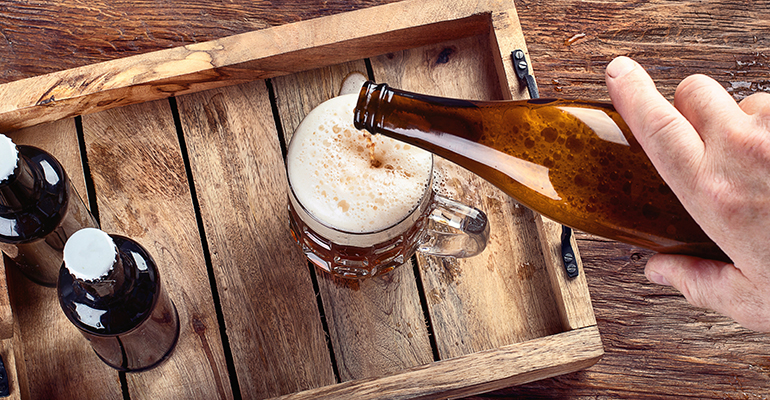One of Euromonitor’s defining trends for 2019 was consumers’ ‘fear of missing out’, or FOMO, giving way to the ‘joy of missing out’, or JOMO.
After years of feeling tied to social media accounts and comparing themselves to others, consumers were looking to reduce time spent online and cut down on their social engagements in favour of real-life experiences, which they would no longer feel compelled to share on social networks.
According to the market research firm, the rise of in-home consumption was directly tied into this, with premium positioned craft beverages bought to be enjoyed at home increasingly competing with trips to bars and pubs.
The popularity of meal kits could also be an indicator of this desire for real-life experiences. Instead of offering the consumer a pre-prepared ready meal that needs only to be re-heated, meal kits make the individual part of the cooking and creation process.
Euromonitor said the coronavirus pandemic, which has forced people to stay at home for several months and meant most restaurants and bars are closed, could further drive this trend.
“Countertop commerce, i.e. the development of gadgets to create beverages at home, will become more pronounced (…) also due to a desire to take control of the preparation process.
“There will be also be a more sedate, solitary aspect to experiences, with more of a focus on health and mental wellbeing,” write analysts in a white paper.
Analyst Camilla Butler suggested that coffee pods in particular were likely to respond well to the coronavirus crisis. Despite being more expensive than other forms of coffee, people saw them as a more economical way to enjoy takeaway-style coffee, “bringing the café experience back home”.
From beverages to bakery
Tigout is an Argentinian start-up looking to expand pods from the beverage to the baking category. The CEO and founder Rodrigo Cordoba said inspiration for the Tigout machine, which transforms frozen pods into restaurant-style desserts, came directly from the popularity of coffee pods.

Tigout’s dessert pod machine ties in with the trend for making consumers part of the creation process, he said.
“The trend is convenience and the desserts are very simple to prepare. But the process of preparing the pods is also quite fun and playful. You take the product from the pod and then use special tongs to remove the dessert from the mould so there is an interaction,” he said.
The company is in the process of developing different toppings that consumers can add to customize each dessert.
“The most important things that consumers value is the convenience and quality of the products. The desserts are 100% freshly baked and are quite complex, premium pastry products that you usually see in a restaurant and not a supermarket,” he added.
Digital engagement can create experiences
Tapping into this trend is not just for companies whose products offer the consumer a very tangible way to take part in the production process.
Jon Reay, CEO and founder of strategic consultancy Rewrite Digital, told Fi Global Insights that brands could use digital or social media engagement to transform food and drink products into experiences for the consumer.
“In some ways, the COVID-19 crisis has made it difficult for food and drink brands to connect with consumers: bars and restaurants shut, shops reduced to essential use only. However, it has also rekindled new ways for brands to engage with consumers that will endure even as we emerge from lockdown.
“With everyone being at home more, having more time in general and cutting back on spending, there has certainly been a rise in home cooking, baking, brewing and cocktail making,” he said.
“When KFC opened its doors again, they ran a campaign showcasing many of the homemade versions of their meals consumers had shared on social media, under the headline ‘we'll take it from here’.
“Other brands like Brewdog have taken to hosting regular online events to engage with their customers. The world's largest online quiz has also featured during the lockdown period, attracting over 180,000 people.”
However, Aimee Okafor, director of experiential at neuromarketing and communication agency HeyHuman, warned that companies shouldn’t try to do things in half measure.
“Yes, people do want more experiences, but in reality people have always wanted experiences and by the nature of it, more of them. People want richer, more immersive experiences – but on the flip-side that means that low engagement experience can actually have the effect of being damaging to your brand,” she said.
“Furthermore, due to the internet and social media, sharing experiences is now commonplace. To capitalise on this, brands should put their physical product at the heart of experiential.”


